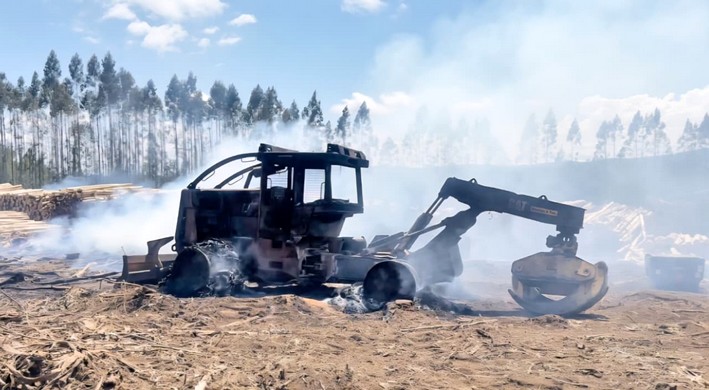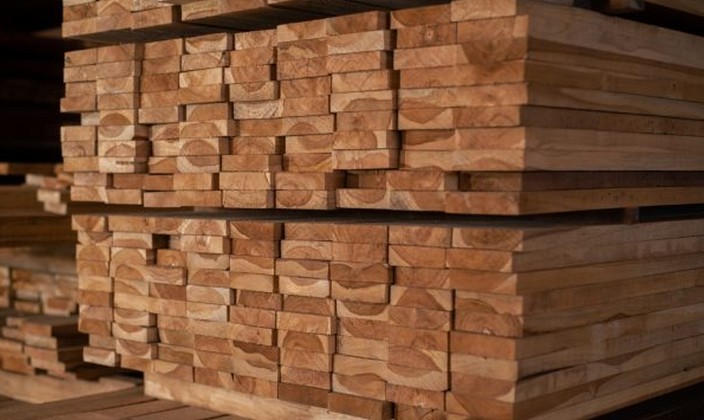Women's Participation in the Forestry Contractor Sector
Income and Wage Gap
The Chilean Forestry Contractors Association, ACOFORAG, has deemed it highly relevant to conduct an applied study aimed at understanding women's labor participation in the forestry contractor sector. To this end, a survey was administered to over 100 associated companies in sectors such as harvesting, thinning, transportation, silviculture, roads, biomass, and other forestry specializations.
In the first part of the study, published in the previous edition of this magazine, it was determined that, overall, female labor participation remains very low, not exceeding 5% in the Chilean forestry contractor sector, which primarily comprises medium to large-sized companies. Additionally, while there are increasingly more women in business partnerships, this does not necessarily mean they hold active roles in these companies. Lastly, while two-thirds of women working in forestry companies hold administrative positions, only 15.7% work in forestry operations.
In the second part of this article, we examine the relationship between income, age group, and gender of forestry workers to answer whether a potential gender gap exists in the forestry contractor sector. We also analyze the influence of age on income levels and, finally, draw relevant conclusions from the survey results.
In the second part of this article, we examine the relationship between income, age group, and gender of forestry workers to answer whether a potential gender gap exists in the forestry contractor sector. We also analyze the influence of age on income levels and, finally, draw relevant conclusions from the survey results.
Regarding net income levels based on the educational attainment of male workers, initial data analysis shows that as workers' skill levels increase, so does their income. For example, 83.6% of skilled workers earn between $700,001 and $2,500,000 net, while only 46.5% of unskilled workers reach this income level.
Generally, unskilled workers refer to those who have not yet qualified within a forestry specialization, such as machinery operators, forestry drivers, or chainsaw operators. However, many are often in training to obtain formal qualifications in these roles. Most male workers (53.5%) fall into the lowest income brackets, earning less than $500,000 to $700,000 pesos.
It can be said, broadly, that educational level—or rather, workers' competence for a job—strongly influences income levels. For workers with technical-professional or university education, most are concentrated in the $700,001 to $1,200,000 segment (73.1%) or the $1,200,001 to $2,500,000 segment (55.7%). The few workers with postgraduate degrees (88.9%) are mostly in the highest income bracket, above $2,500,000, typically in managerial or executive roles.
While there are significant income differences based on education, there are no extreme disparities: only 14.1% of unskilled workers and 3.5% of skilled workers in the forestry sector earn less than $500,000. The minimum net wage in the sector is around $450,000, usually paid to trainees or new hires.
Another perspective shows that income levels are highly concentrated in the middle (54.2% in the $700,001–$1,200,000 range) and upper-middle brackets (20.2% in the $1,200,001–$2,500,000 range). The forestry sector generally offers good incomes and job stability, as many contracts span 4 to 5 years. Only 5.8% of workers earn less than $500,000, and just 0.5% earn above $2,500,000—mostly those with postgraduate degrees. Overall, the sector appears meritocratic: acquiring job skills is appropriately rewarded.
The results show net income levels based on the educational attainment of female workers in the forestry contractor sector, covering a sample of 112 women from forestry contracting companies.
Most unskilled female workers (72.7%) are concentrated in the $500,001–$700,000 income bracket. This shifts when women gain qualifications, with an 18.2% increase in those earning $700,001–$1,200,000. While skills influence women's wages, the effect is less pronounced than for men. Only 35.3% of university-educated women fall into the $700,001–$1,200,000 range, with a similar proportion (33.3%) in the $500,001–$700,000 bracket. Moreover, just 11.8% and 5.9% of university-educated women earn $1,200,001–$2,500,000 and above $2,500,000, respectively.
For women with technical-professional education, most (60.6%) fall into the $700,001–$1,200,000 bracket. Many in this group are occupational risk prevention specialists or administrative professionals.
In terms of income concentration among women, most (42%) are in the $500,001–$700,000 range, followed by $700,001–$1,200,000 (33%). Only 2.7% of women in the sector earn above $2,500,000. Compared to their male counterparts, women tend to earn less. At this point, can we conclude a gender gap exists? With the available data, a definitive answer is elusive. However, as noted in the first article, most male workers (81.4%) are in operations (higher-paying roles), while most women (71.1%) are in administration. Operational roles often include variable pay tied to production targets, boosting earnings.
Survey data reveal the age distribution of forestry contractor workers. Most (56.6%) are in middle-age groups: 35–44 (30.9%) and 45–54 (25.7%). Experienced personnel are prioritized, with only 2.7% over 65.
This trend is clear in operations, where 55.6% are middle-aged (35–44: 31.7%; 45–54: 23.9%). However, 17.7% are aged 30–34. In logistics, experience is key, with 55.7% aged 45–54. Maintenance, a subset of operations, has 41.9% aged 35–44 and 18.2% aged 45–54.
Risk prevention staff are mostly young to middle-aged (30–34: 34.3%; 35–44: 36.8%). In contrast, male administrative staff are distributed across 30–34 (25%), 35–44 (28.7%), and 45–54 (25%).
Female workers are concentrated in the 45–54 age group (50%), followed by 35–44 (17.7%) and 30–34 (15.5%). Few women in extreme age groups work in forestry contracting.
Like men, women in operations are mostly middle-aged (35–44: 41.7%; 45–54: 33.3%). Logistics has 91.1% aged 45–54. Maintenance employs few women, with 70% aged 35–44. Risk prevention skews younger (25–29: 38.9%; 30–34: 27.8%). In administration, most women (55.3%) are aged 30–44.
The key conclusion of this second part is that skill level—for both genders—strongly influences income. The forestry contractor sector offers good wages, which at first glance favor men over women. However, this gap may largely stem from men dominating higher-paying operational roles, while women are concentrated in administration. The challenge is to create policies and programs that encourage more women to enter higher-paying operational roles.
Finally, analyzing the link between age and work areas, the forestry sector values experience, with a significant share of middle-aged workers. Extreme age groups are underrepresented. The 21st-century challenge is to integrate experienced personnel for training and operational roles, as well as leveraging women's expertise in maintenance and logistics—not just administration.
Marcos Tricallotis Campaña, PhD, Innovation & Sustainability Advisor
SOPHOS Consultants SpA
www.sophosconsultores.cl

















